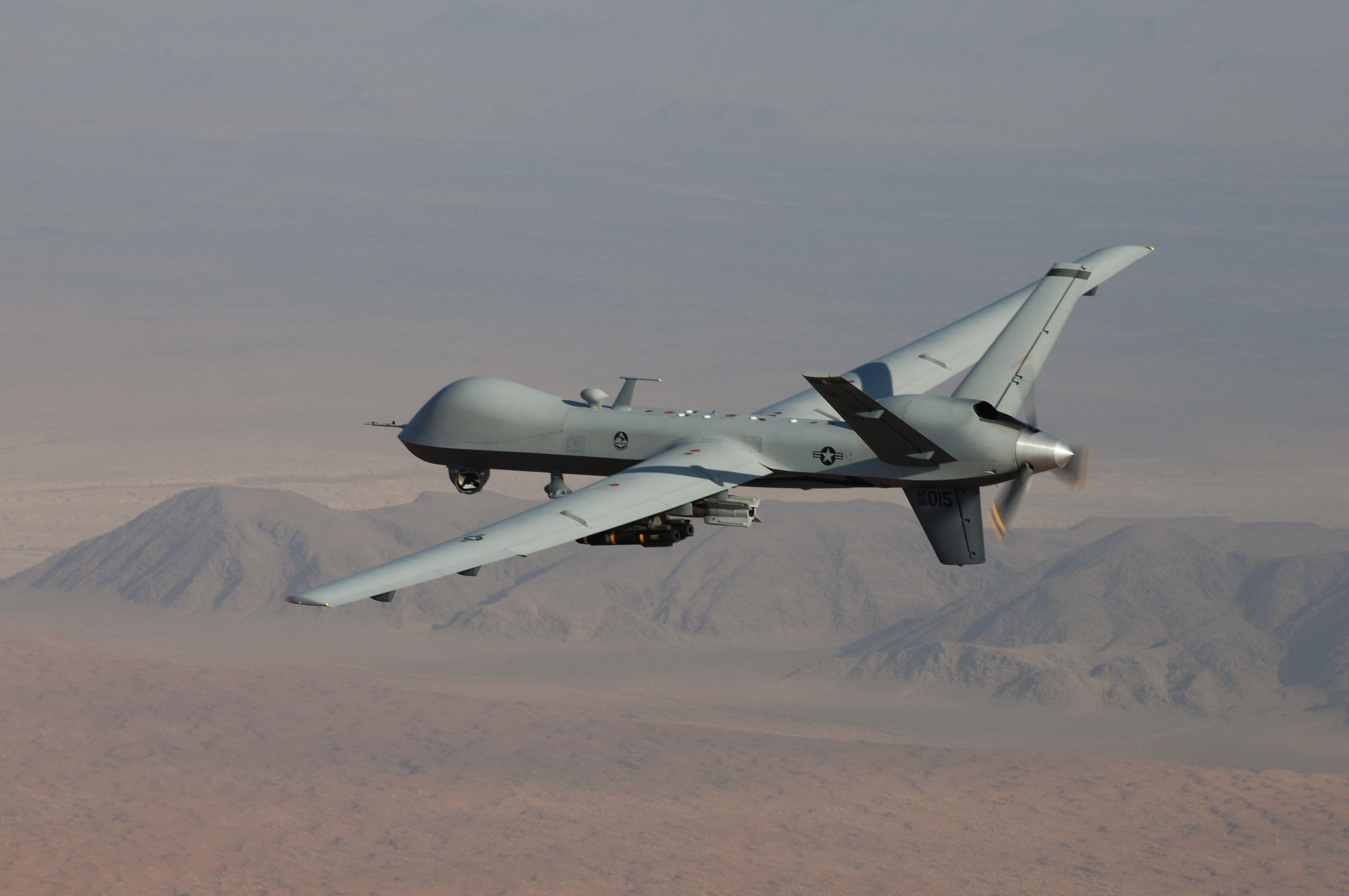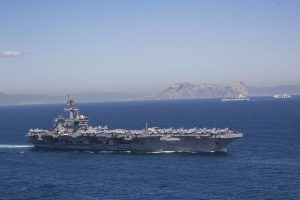By PAUL MCLEARY
 WASHINGTON: The US on Sunday accused Iran and Iranian-backed Houthi rebels of firing surface-to-air missiles at American Reaper drones twice over the past week, confirming earlier reports that the Houthis brought down one of the US drones over Yemen on June 6.
WASHINGTON: The US on Sunday accused Iran and Iranian-backed Houthi rebels of firing surface-to-air missiles at American Reaper drones twice over the past week, confirming earlier reports that the Houthis brought down one of the US drones over Yemen on June 6.
Houthi social media accounts posted video and photos last week showing what they claimed were images of the downed Reaper. The shootdown, and another attempted shootdown by what the US claims were Iranian forces, represent a significant escalation in tensions in the Gulf region after weeks of rhetoric by US and Iranian officials, sparking fears over the countries stumbling into a military confrontation.
The incidents, according to a CENTCOM statement, were undertaken by Iran, or “enabled” by the regime.
The June 6 downing was the result of the Houthis firing a Russian-made SA-6 ground-to-air missile which “indicated an improvement over previous Houthi capability,” according to CENTCOM.
On June 13, “a modified Iranian SA-7 surface-to-air missile attempted to shoot down” the second Reaper operating over the Gulf of Oman keeping watch over the stricken oil tanker Kokuka Courageous, which the US says was struck by an Iranian limpet mine.
Lt. Col. Earl Brown, Central Command spokesman said in a statement that “subsequent analysis indicates that this was a likely attempt to shoot down or otherwise disrupt the MQ-9 surveillance of the IRGC attack on the M/T Kokuka Courageous.”
The Trump administration is weighing “a full range of options” against Iran, including military action, Secretary of State Mike Pompeo said on Fox News Sunday. “We are confident that we can take a set of actions that can restore deterrence.”
Speaking to reporters at the Pentagon Friday, acting Defense Secretary Patrick Shanahan said the US was planning to “make contingency plans should the situation deteriorate” in the region.
The increasingly tense standoff between the US and Iran began last year when the Trump administration withdrew from an international agreement which limited Iran’s nuclear program. The Trump administration has more recently slapped new rounds of sanctions on the repressive regime in Tehran, including ending waivers that allowed some countries to continue buying Iranian oil.
Last month, the Trump administration ordered about 1,500 troops and a missile defense system to the Middle East to deter Iran, along with the Abraham Lincoln carrier strike group, which remains in the area but still outside of the Persian Gulf.
USS Abraham Lincoln (CVN 72) transits the Strait of Gibraltar, entering the Mediterranean on April 19.
The moves, Gen. James Dunford, chairman of the Joint Chiefs of Staff said recently, came in response to what he said were Iranian actions that “looked more like a campaign than individual threat.” While US forces always watch Iran, he added, “it was the geographic span and the perception that that activity would try to be synchronized in time that caused us to look at that threat differently than 40 years of malign activity by the Iranians.”
Things took a turn on Thursday, when two civilian oil tankers in the Gulf of Oman were damaged by explosions. The US said that limpet mines placed on the ships by Iran were to blame for the damage, and the USS Bainbridge and USS Mason guided missile destroyers were sent to assist the stricken Japanese oil tanker, Kokuka Courageous.
Despite the missile launches and increased US military posture in the region, “President Trump has done everything he can to avoid war,” Pompeo said Sunday. “We don’t want war. We’ve done what we can to deter this. The Iranians should understand very clearly that we will continue to take actions to deter Iran from engaging in this kind of behavior.”
The Pentagon on Thursday took the extraordinary step of releasing a video of an Iranian boat approaching one of the damaged tankers and removing what US officials say is an unexploded limpet mine from the side.
Shanahan, prior to meeting with Portuguese Defense Minister João Cravinho on Friday said the US is looking “to broaden our support for this international situation.”
Earlier in the day, Shanahan got that support from London, where UK Foreign Secretary Jeremy Hunt said the UK’s assessment “leads us to conclude that responsibility for the attacks almost certainly lies with Iran. These latest attacks build on a pattern of destabilising Iranian behaviour and pose a serious danger to the region.”
But other allies are taking a slower approach, perhaps mindful of the performance US officials put on in 2002 in the run up to war with Iraq. German Foreign Minister Heiko Maas said today the video evidence isn’t enough, at least just yet. “We can understand what is being shown, sure, but to make a final assessment, this is not enough for me,” he said.

No comments:
Post a Comment